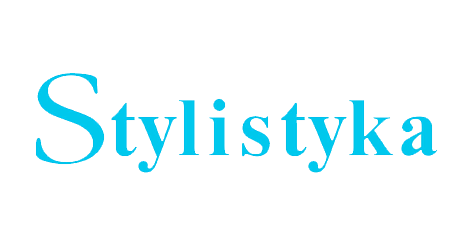Choduń A., 2004, Język prawny a język potoczny. – Język. Prawo. Społeczeństwo, red. E. Malinowska, Opole: Wydawnictwo Uniwersytetu Opolskiego, s. 77–86.
Google Scholar
Choduń A., 2007, Słownictwo tekstów aktów prawnych w zasobie leksykalnym współczesnej polszczyzny, Warszawa: Wydawnictwo Trio.
Google Scholar
De Virion T., 2010, Przemówienie w procesie karnym. – Wymowa prawnicza, red. J. Bralczyk i in., Warszawa: Wydawnictwo C.H. Beck, s. 119–128.
Google Scholar
Gajda S., 2004, Język administracyjno-prawny w perspektywie językoznawczej i prawoznawczej. – Język. Prawo. Społeczeństwo, red. E. Malinowska, Opole: Wydawnictwo Uniwersytetu Opolskiego, s. 19–31.
Google Scholar
Gizbert-Studnicki T., 1986, Język prawny z perspektywy socjolingwistycznej, Warszawa–Kraków: Państwowe Wydawnictwo Naukowe.
Google Scholar
Gizbert-Studnicki T., 2007, Postępowanie sądowe jako złożony dyskurs – zagadnienia pragmatyki języka sali sądowej, https://rjp.pan.pl/index.php?option=com_conten t&view=article&id=1376 (dostęp: 12.09.2022).
Google Scholar
Gmerek K., 2019, Rozprawa sądowa jako zdarzenie komunikacji społecznej, Szczecin: Wydawnictwo Naukowe Uniwersytetu Szczecińskiego.
Google Scholar
Jarosz M., 1957, Sylwetki wybitnych obrońców warszawskich w okresie międzywojennym, „Palestra. Pismo Adwokatury Polskiej”, t. 1, nr 3, s. 57–66, https://bazhum.pl/bib/article/465636/ (dostęp: 12.09.2022).
Google Scholar
Kania L., 2005, Wspomnienie o adwokacie Eugeniuszu Śmiarowskim (1878–1932), „Palestra. Pismo Adwokatury Polskiej”, t. 50, nr 11–12 (575–576), s. 138–142, https://palestra.pl/pl/czasopismo/wydanie/11-12-2005 (dostęp: 12.09.2022).
Google Scholar
Kisza A., Krzemiński Z., Łyczywek R., 1995, Historia adwokatury polskiej, Warszawa–Skrzeszew: Wydawnictwo M. C. Kwadrat.
Google Scholar
Kocznur J., 1971, Z historii wymowy sądowej w Polsce (1918–1939), „Palestra. Pismo Adwokatury Polskiej”, t. 15, nr 2 (158), s. 3–18, , https://bazhum.muzhp.pl/media/files/Palestra/Palestra-r1971-t15-n2(158)/Palestra-r1971-t15-n2(158)-s3-18/Palestra-r1971-t15-n2(158)-s3-18.pdf (dostęp: 12.09.2022).Lubocha-Kruglik J., 2017, Strategie komunikacyjne w dyskursie prawniczym (na mate riale mów obrończych F. Plewaki), „Lingwistyka Stosowana 21”, nr 1, s. 71–81.
Google Scholar
Łyczywek R., Missuna O., 2017, Sztuka wymowy sądowej, Sopot: Wydawnictwo Arche.
Google Scholar
Malinowska E., 1995, Styl urzędowy. – Przewodnik po stylistyce polskiej, red. S. Gaj da, Opole: Wydawnictwo Uniwersytetu Opolskiego, s. 431–448.
Google Scholar
Malinowski A., 2006, Polski język prawny. Wybrane zagadnienia, Warszawa: Wydawnictwo Prawnicze LexisNexis.
Google Scholar
Mowy sądowe 1, 1925, wybór i oprac. S. Gelernter, przedmowa C. Ponikowski, Warszawa: Księgarnia F. Hoesicka, s. 7–12, https://www.wbc.poznan.pl/dlibra/publication/414452/edition/327243/content (dostęp: 12.09.2022).
Google Scholar
Ruszer A., 2008, Mowa sądowa jako retoryczny gatunek tekstu, rozprawa doktorska, Uniwersytet Jagielloński, Archiwum UJ, Dokt. 2008/101 (dostęp: 12.09.2022).
Google Scholar
Rzeszutko M., 2003, Rozprawa sądowa w świetle lingwistyki tekstu, Lublin: Wydawnictwo Uniwersytetu Marii Curie-Skłodowskiej.
Google Scholar
Rzeszutko-Iwan M., 2013, Terminy język prawny i język prawniczy w ostatnim siedemdziesięcioleciu. – 70 lat współczesnej polszczyzny. Zjawiska. Procesy. Tendencje. Księga jubileuszowa dedykowana Profesorowi Janowi Mazurowi, red. A. Dunin-Dudkowska, A. Małyska, Lublin: Wydawnictwo Uniwersytetu Marii Curie-Skłodowskiej, s. 485–497.
Google Scholar
Suligowski A., 1905, Z ciężkich lat (mowy), Kraków–Warszawa: Gebethner i Wolff.
Google Scholar
Szczepankowska I., 2016a, Dyskurs prawny. Języki, teksty i konteksty, Białystok: Wydawnictwo Uniwersytetu w Białymstoku.
Google Scholar
Szczepankowska I., 2016b, Konstelacja dyskursów związanych tematycznie i funkcjonalnie ze sferą prawa – próba typologii. – Dyskurs i jego odmiany, red. B. Witosz, K. Sujkowska-Sobisz, E. Ficek, Katowice: Wydawnictwo Uniwersytetu Śląskiego, s. 31–40.
Google Scholar
Śliwicka A., 2018, Język prawny i prawniczy jako przedmiot badań językoznawczych i prawoznawczych w latach 1935–1999, „Prace Językoznawcze”, t. 20, nr 3, s. 151–164.
DOI: https://doi.org/10.31648/pj.4547
Google Scholar
Wilkoń A., 2002, Spójność i struktura tekstu, Kraków: Towarzystwo Autorów i Wydawców Prac Naukowych Universitas.
Google Scholar
Wiśniowski A., 2015, Cechy gatunkowe przemówienia obrończego w polskim postępowaniu karnym. – Gatunki mowy i ich ewolucja, t. 5: Gatunek a granice, red. D. Ostaszewska, J. Przyklenk, Katowice: Wydawnictwo Uniwersytetu Śląskiego, s. 473–483.
Google Scholar
Witosz B., 2009, Dyskurs i stylistyka, Katowice: Wydawnictwo Uniwersytetu Śląskiego.
Google Scholar
Wojciechowska A., Nowak S., 2023, Mowy obrończe Eugeniusza Śmiarowskiego w perspektywie genologicznej, „Język Polski”, z. 2, s. 110–122.
DOI: https://doi.org/10.31286/JP.00155
Google Scholar
Wojtak M., 1993, Styl urzędowy. – Współczesny język polski, red. J. Bartmiński, Wrocław: Wydawnictwo „Wiedza o Kulturze”, s. 147–162.
Google Scholar
Wojtak M., 2004, Gatunki prasowe, Lublin: Wydawnictwo Uniwersytetu Marii Curie-Skłodowskiej.
Google Scholar
Wojtak M., 2014, Genologiczna analiza tekstu, „Prace Językoznawcze”, nr 16/3, s. 63–71.
Google Scholar
Wróblewski B., 1948, Język prawny i prawniczy, Kraków: Polska Akademia Umiejętności, https://bibliotekacyfrowa.pl/publication/36133 (dostęp: 12.09.2022).
Google Scholar
Wybór obron sądowych Adolfa Pepłowskiego, 1912 (t. I), 1914 (t. II), Warszawa: Koło Prawników Polskich.
Google Scholar
Zeidler K., 2004, O dopuszczalności stosowania sposobów erystycznych w po stępowaniu sądowym, „Palestra. Pismo Adwokatury Polskiej”, t. 49, z. 7–8, s. 119–130, file:///C:/Users/User/Downloads/Palestra_Zeszyt_2004_7-8_www.pale stra.pl.pdf (dostęp: 12.06.2023).
Google Scholar
Zeidler K., 2009, Erystyka w praktyce prawniczej, „Ruch Prawniczy, Ekonomiczny i Socjologiczny”, t. 71, z. 4, s. 51–65, https://repozytorium.amu.edu.pl/bitstre am/10593/4553/1/05_Kamil_Zeidler_Erystyka%20w%20praktyce%20prawniczej _51-65.pdf (dostęp: 12.06.2023).
Google Scholar
Zgółka T., Zieliński M., 2003, Perswazja w języku prawnym i prawniczym. – Język perswazji publicznej, red. K. Mosiołek-Kłosińska, T. Zgółka, Poznań: Wydawnictwo Poznańskie, s. 182–189.
Google Scholar
Zieliński M., 1999, Języki prawne i prawnicze. – Polszczyzna 2000. Orędzie o stanie języka na przełomie tysiącleci, red. W. Pisarek, Kraków: Uniwersytet Jagielloński. Ośrodek Badań Prasoznawczych, s. 50–74.
Google Scholar
Zieliński M., 2004, Język prawny, język administracyjny, język urzędowy. – Język. Prawo. Społeczeństwo, red. E. Malinowska, Opole: Wydawnictwo Uniwersytetu Opolskiego, s. 9–18.
Google Scholar
https://pl.wikisource.org/wiki/M._Arcta_S%C5%82owniczek_wyraz%C3%B3w_obcych (dostęp: 12.09.2022).
Google Scholar
https://sjp.pwn.pl (dostęp: 12.09.2022).
Google Scholar


 https://doi.org/10.25167/Stylistyka32.2023.11
https://doi.org/10.25167/Stylistyka32.2023.11
